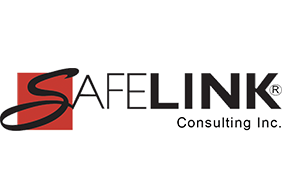Despite best efforts, chemical spills happen. When they do, it is important to take immediate action to ensure the safety of everyone in the facility. If handled properly, a spill may be nothing more than a nuisance. If handled improperly, even a small spill can result in harmful exposure to you and your co-workers. No matter how small or insignificant the spill appears, always notify your colleagues immediately.
Dental laboratories and practices play a crucial role in crafting dental prosthetics and appliances. They often utilize a wide range of chemicals and substances to achieve precise and high-quality results. However, with the handling and storage of chemicals comes the inherent risk of spills, which can pose significant threats to both human health and the environment. It is essential for employers to prioritize safety measures and environmental responsibility to prevent and effectively respond to chemical spills.
Prevention:
Prevention is the first line of defense against chemical spills. Employers should implement proper storage protocols, including adequate labeling, secure containers, and appropriate segregation of incompatible substances. Regular inspections and maintenance of storage areas, coupled with staff training on safe chemical handling practices, are critical in minimizing the risk of spills.
According to the revised Hazard Communication Standard (HCS)(29 CFR 1910.1200(g)) implemented in 2012, manufacturers, distributors, or importers are required to provide Safety Data Sheets (SDSs) (formerly MSDSs or Material Safety Data Sheets) for each hazardous chemical. These Safety Data Sheets (SDSs) provide crucial information about the dangers associated with the chemicals and are now presented in a 16-section user-friendly format. Safety Data Sheets are not only essential for the safe use of the chemicals but also play a critical role in effectively handling spills.
Response and Containment:
Even with precautionary measures in place, accidents can still happen. That's why facilities need to have a well-defined plan for responding to spills. This plan should include immediate actions like isolating the affected area, evacuating personnel if necessary, and wearing the appropriate personal protective equipment (PPE). Having a well-stocked spill kit that contains absorbents and neutralizers will help ensure that cleanup is fast and effective. Following the steps below can help ensure the safety of everyone in the facility and the environment.
Step 1: Identify the Substance & Immediately Notify Co-Workers
The first step in dealing with a chemical spill is to evacuate the area. Notify everyone in the vicinity about the spill and ensure that they move to a safe distance away from the spill. The individual in charge should identify the chemical that spilled, the conditions present, handling procedures, amount spilled, and potential dangers. If the situation is life threatening, immediately call 911 for help.
Depending on the chemical and quantity, it may be necessary to notify local, state, and federal authorities if a spill exceeds a certain limit. The Emergency Planning and Community Right-to-Know Act (EPCRA) specifies reporting obligations for highly hazardous substances. To handle spills effectively, refer to the Safety Data Sheet (SDS) for the specific chemical, particularly section 6 on Accidental Release Measures. This section provides guidance on spill protocols, emergency procedures, expert consultation, and appropriate protective clothing. Following the SDS guidelines ensures safe spill management and compliance with reporting requirements.
Step 2: Protect Yourself
Once it is determined that the spill is not life threatening and can be managed, you must protect yourself from exposure to the chemical. Before attempting to clean up the spill, protect yourself by wearing the appropriate Personal Protective Equipment (PPE). This includes protective suits, gloves, goggles, boots, a face shield and even a respirator if necessary. Chemical spills can be dangerous. Choose the correct level of PPE by referring to the Safety Data Sheet (SDS) for the agent that spilled. Learn more about SDS online access.
In addition to human safety, employers have a responsibility to safeguard the environment. Spilled chemicals can contaminate soil, waterways, and ecosystems. Facilities need to properly dispose of hazardous waste through licensed waste management companies.
Step 3: Stop the Spill
If possible, stop the spill at its source. This can be done by turning a valve, rolling a drum over, or using a leak stopper product.
Step 4: Contain the Spill
When it comes to chemical spills, time is of the essence when it comes to containment. The longer a spill goes untreated, the greater the risk of harm and damage. That's why it's crucial to have spill kits readily available in areas where chemicals are used. These kits should be strategically placed and easily accessible to minimize response times in case of a spill. But availability alone isn't enough; you must also know how to properly use the spill kit to contain the spill quickly and effectively. It's important to keep in mind that various chemicals have distinct properties and require specific cleanup methods to handle spills correctly.
Once you have the appropriate absorbent material, use it to create a barrier around the spill, preventing it from spreading further. Make sure the barrier is secure and that there are no gaps where the chemical can leak through. By containing the spill, you can limit the damage and reduce the risk of harm to yourself, your teammates, and the environment.
Step 5: Neutralize the Spill
The next step is to neutralize the spill. Depending on the chemical involved, different neutralizing agents may be required. Never take a guess on what neutralizing agent to use, as this can make things go from bad to worse. Refer to the Safety Data Sheet (SDS) on the chemical that spilled and closely follow the instructions for containment and cleanup which can also be found in section 6.
The absorbent material in your spill kit should be carefully selected to ensure that it is non-reactive and will not interact with the spilled chemical. For example, if the chemical is acidic, you should use an alkaline absorbent material to neutralize it. Similarly, if the chemical is flammable, you should use an absorbent material that is non-flammable. Again, never take a guess on what neutralizing material needs to be used.
Step 5: Clean Up the Spill
After the spill has been neutralized, it is time to clean it up. Use a shovel or a dustpan to scoop up the absorbent material and the spilled chemical. Dispose of the material in a hazardous waste container and follow all guidelines put in place in by your employer.
Step 6: Decontaminate the Area
Once the spill has been cleaned up, it is important to decontaminate the area. Using a detergent solution and a clean cloth, thoroughly wipe down the affected area and rinse with water. Always wear appropriate PPE when decontaminating the area.
Step 7: Restock/Replenish the Spill Kit
Having a spill kit readily available in your workplace is just the beginning. To truly be prepared for a chemical spill, it's essential that the kit is always fully stocked and ready for immediate use. Reminding your team members to inform the supervisor or safety manager when the kit has been used is crucial so that it can be restocked promptly. This not only ensures that you are prepared for any spill that may occur, but it also shows that you take safety seriously in your workplace.
10 Tips for safely using bleach.
Let's Sum it Up:
To ensure a safe workplace, it is important to identify the potentially hazardous properties of all chemicals used or produced in your facility and train all employees on the chemicals they work with. Prior to using any chemicals, employers must also assess the potential consequences of spills and establish appropriate response procedures. Properly managing chemical spills is important because even the smallest spills can lead to significant consequences.
By following the steps outlined above, you can prioritize the safety of everyone in the area and prevent further harm to the facility and the environment. Employers can minimize these risks by giving importance to preventive measures, establishing a well-prepared spill response plan, and promoting environmental responsibility. Always consult your employer's guidelines for spill management, as they provide valuable information on how to handle the situation safely. Remember, taking necessary precautions can greatly reduce the impact of a spill.
Learn more about Hazard Communication.
What can SafeLink Consulting do for my business?
SafeLink Consulting addresses your business needs whether they are a basic quality system or safety program to an expanded quality system to improve good business practices or comprehensive safety plan. We provide customized programs specific to your business model. SafeLink Consulting offers your business the whole package on quality systems, safety programs, patient security and chairside services plus compliance with FDA, OSHA & HIPAA. Learn more about how to achieve OSHA compliance for the dental practice or dental lab.
Learn more about what SafeLink Consulting can do to help your business with compliance services, including safety compliance, to meet OSHA training requirements and quality system consulting to meet FDA compliance.
Get notification when new regulatory compliance training courses are added plus upcoming events by subscribing to our email news.








Leave Comment